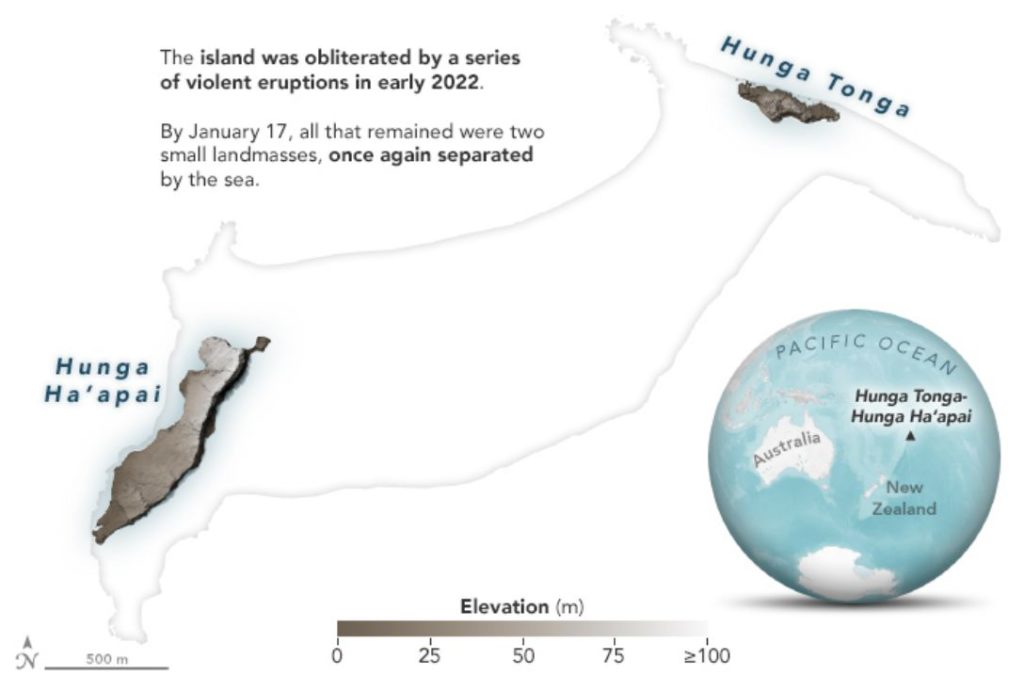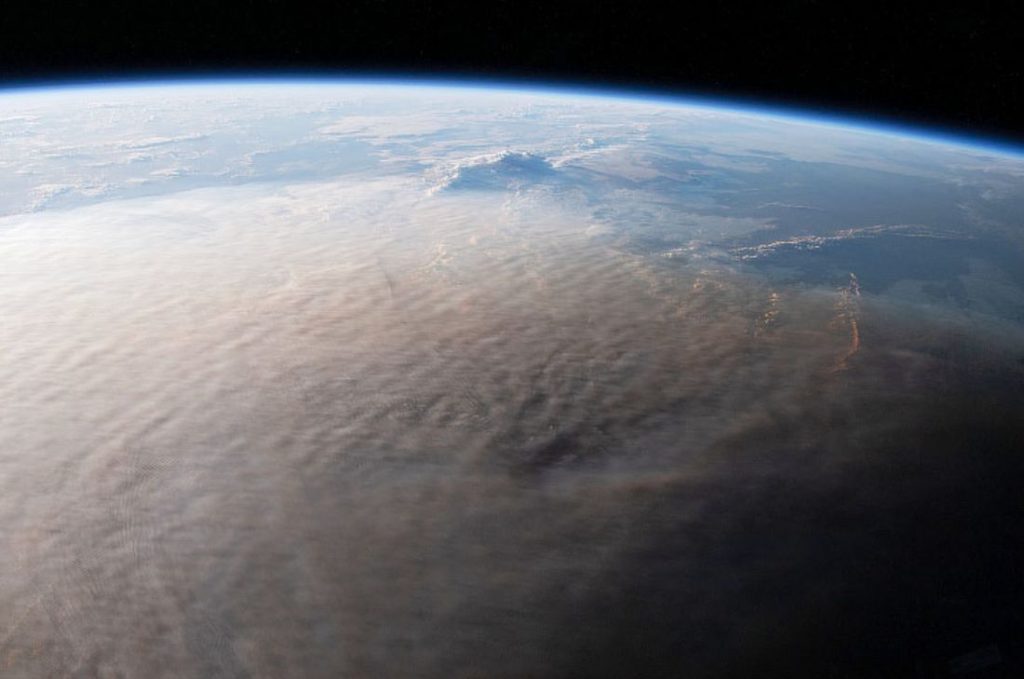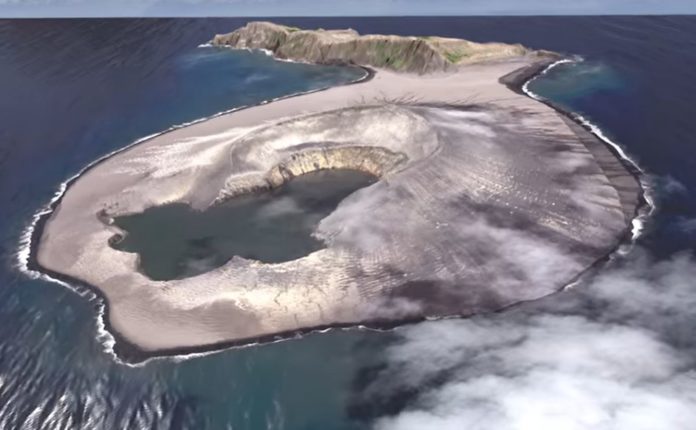The amount of energy released by the Hunga Tonga-Hunga Ha‘apai volcano’s cataclysmic eruption was equivalent to between 5 and 30 megatons of TNT, according to NASA’s first estimates.
According to Jim Garvin, chief scientist at the Goddard Space Flight Center, “This is a preliminary estimate, but we think amount of energy released by the eruption was equivalent to somewhere between 5 to 30 megatons of TNT.”
The explosion produced hundreds of times the mechanical energy unleashed by the Hiroshima nuclear bombing. Mount St. Helens exploded with 24 megatons of energy in 1980, while Krakatoa exploded with 200 megatons of energy in 1883, according to scientists.
Following the deadly eruption on January 15, Garvin and NASA colleague Dan Slayback collaborated with a number of academics to create precise maps of Hunga Tonga-Hunga Ha’apai above and below the waterline.
They used high-resolution radar from NASA’s ICESat-2 mission, optical observations from the commercial satellite company Maxar, and altimetry from the Canadian Space Agency’s RADARSAT Constellation Mission. The Schmidt Ocean Institute, in collaboration with NASA and Columbia University, obtained sonar-based bathymetry data.
Researchers from NASA, Columbia University, the Tongan Geological Service, and the Sea Education Association have been collaborating for the past six years to figure out how the young landscape was deteriorating owing to the constant churn of waves and the occasional hammering by tropical storms. They also noted how wildlife had gone from the lush ecosystems of Hunga Tonga and Hunga Ha’apai to colonize the more barren landscapes of the newest area, including numerous types of plants, grasses, insects, and birds.

In January, everything changed radically. For the first few weeks of 2022, the volcanic activity appeared to be usual, with periodic, tiny explosions of tephra, ash, steam, and other volcanic gases as magma and seawater interacted at a vent near the island’s center. The Surtseyan eruptions were altering the terrain and increasing the island by depositing additional ash and tuff on top of the developing volcanic cone.
“By early January, our data showed the island had expanded by about 60 percent compared to before the December activity started,” said Garvin. “The whole island had been completely covered by a tenth of cubic kilometer of new ash. All of this was pretty normal, expected behavior, and very exciting to our team.”
However, on January 13-14, an extremely intense pair of blasts pushed ash soaring into the stratosphere. Then, on January 15, explosions blasted debris as high as 40 kilometers (25 miles) and potentially as high as 50 kilometers, blanketing adjacent islands in ash and causing damaging tsunami waves. This image of ash over the South Pacific was taken by an astronaut on the International Space Station.

In most Surtseyan eruptions, just a small amount of water comes into touch with the magma.
“If there’s just a little water trickling into the magma, it’s like water hitting a hot frying pan. You get a flash of steam and the water burns burn off quickly,” explained Garvin. “What happened on the 15th was really different. We don’t know why — because we don’t have any seismometers on Hunga Tonga-Hunga Ha‘apai — but something must have weakened the hard rock in the foundation and caused a partial collapse of the caldera’s northern rim. Think of that as the bottom of the pan dropping out, allowing huge amounts of water to rush into an underground magma chamber at very high temperature.”
The temperature of lava is typically around 1000 degrees Celsius, while seawater is closer to 20 degrees Celsius. The combination of the two can be extremely explosive, especially in the tight confines of a magma chamber.
“This was not your standard Surtseyan eruption because of the large amount of water that had to be involved,” said Garvin. “In fact, some of my colleagues in volcanology think this type of event deserves its own designation. For now, we’re unofficially calling it an ‘ultra Surtseyan’ eruption.”
For a geologist like Garvin, studying the birth and evolution of a “Surtseyan island” like this is fascinating, especially because there haven’t been many other current examples. Aside from Surtsey, which originated near Iceland in 1963–67 and is still there more than 50 years later, most new Surtseyan islands are worn away in a matter of months or years.
What interests Garvin about these islands is what we can learn about Mars from them.
“Small volcanic islands, freshly made, evolving rapidly, are windows in the role of surface waters on Mars and how they may have affected similar small volcanic landforms,” he said.
“We actually see fields of similar-looking features on Mars in several regions.”
Source / Image: NASA
You were reading: Tonga volcano released energy like hundreds of Hiroshima bombs
